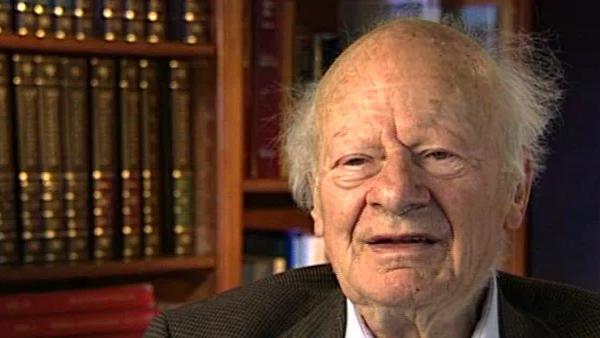NEXT STORY

Feynman's new ideas at The Pocono Conference
RELATED STORIES

NEXT STORY

Feynman's new ideas at The Pocono Conference
RELATED STORIES


|
Views | Duration | |
|---|---|---|---|
| 101. Joining the President's Science Advisory Committee | 382 | 02:02 | |
| 102. The Shelter Island Conference | 818 | 02:47 | |
| 103. The Lamb shift | 1 | 2300 | 02:42 |
| 104. Calculating the Lamb shift | 4065 | 03:31 | |
| 105. Feynman, Weisskopf and Schwinger's calculations of the Lamb shift | 1816 | 03:53 | |
| 106. Feynman's new ideas at The Pocono Conference | 1821 | 01:17 | |
| 107. Freeman Dyson: An excellent graduate | 1 | 2499 | 04:18 |
| 108. Presenting Schwinger, Feynman and Dyson's ideas at Birmingham | 1297 | 01:42 | |
| 109. Michel Baranger and Gerald Brown's work in the Lamb shift | 842 | 02:12 | |
| 110. Thinking about mesons at the Shelter Island Conference | 532 | 02:23 |


I still had to calculate some matter about the hydrogen wave functions which was done with the help of some people at the General Electric research lab. And when it came out to be just about a 1040MHz, and I published that. And as far as I know, this paper both disappointed and stimulated other people who were... who were more versed in relativistic theory, namely Schwinger and Feynman. And they each in... and also Weisskopf. Weisskopf pursued the theory in a... in an old fashioned way and calculated the relativistic part, together with some of his collaborators. And Schwinger was stimulated to produce a completely new theory, relativistically invariant theory of quantum electrodynamics. But essentially extending the old quantum electrodynamics, making it relativistically invariant and so on. Schwinger finally came up... came up with the result for the Lamb shift and for another very important effect, namely the extra mass of an electron which had also been presented... not the extra mass, the extra magnetic moment of an electron, which had also been presented at the Shelter Island Conference, by Kusch. So, at the same time, Feynman at Cornell used the completely novel and independent way of getting at the same problem. He had his own way of doing quantum mechanics, his own way of putting in the electric field. And it turned out that in the end that Feynman's new way was very much easier than Schwinger's way. And he came to a similar result as... as Schwinger, they both calculated the Lamb shift, they both found about the right result, not quite the right result. Weisskopf was the... the first to find the exactly right result. And... both Schwinger and Feynman then presented their results at a follow up conference at Pocono Manor, in 1948. Their theories seemed to be totally different.
The late German-American physicist Hans Bethe once described himself as the H-bomb's midwife. He left Nazi Germany in 1933, after which he helped develop the first atomic bomb, won the Nobel Prize in Physics in 1967 for his contribution to the theory of nuclear reactions, advocated tighter controls over nuclear weapons and campaigned vigorously for the peaceful use of nuclear energy.
Title: Feynman, Weisskopf and Schwinger's calculations of the Lamb shift
Listeners: Sam Schweber
Silvan Sam Schweber is the Koret Professor of the History of Ideas and Professor of Physics at Brandeis University, and a Faculty Associate in the Department of the History of Science at Harvard University. He is the author of a history of the development of quantum electro mechanics, "QED and the men who made it", and has recently completed a biography of Hans Bethe and the history of nuclear weapons development, "In the Shadow of the Bomb: Oppenheimer, Bethe, and the Moral Responsibility of the Scientist" (Princeton University Press, 2000).
Tags: Lamb Shift, General Electric, Shelter Island Conference, Cornell University, Feynman diagram, Pocono Manor, Richard Feynman, Victor Weisskopf, Julian Schwinger, Polykarp Kusch
Duration: 3 minutes, 54 seconds
Date story recorded: December 1996
Date story went live: 24 January 2008